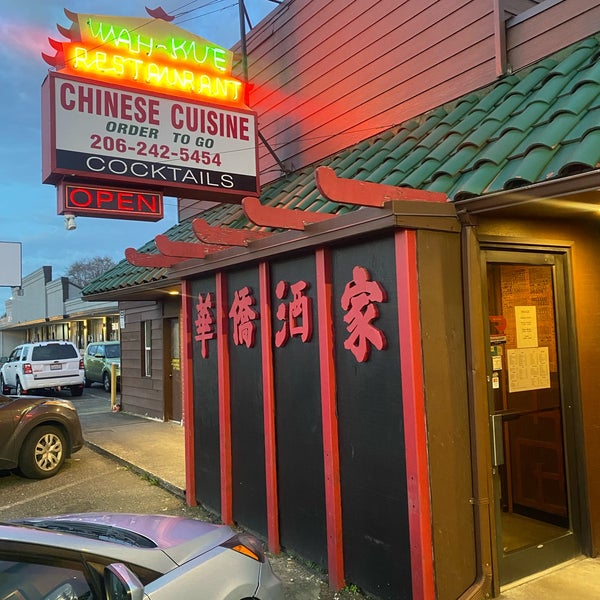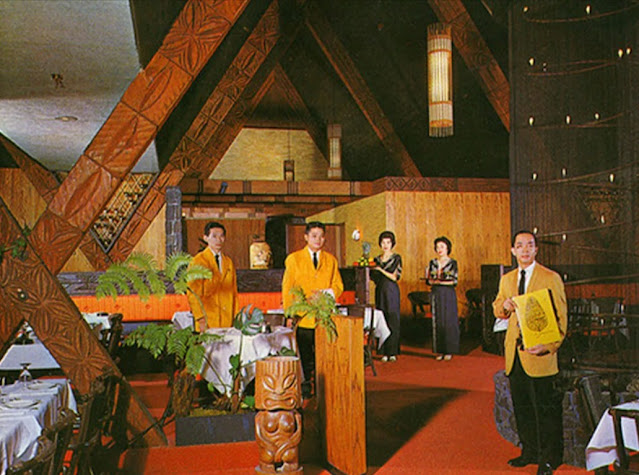The Chinese Connection
In Seattle, many Chinese restaurants have a tiki theme and many tiki restaurants served Chinese food and there is a historical connection between tiki culture and Chinese restaurants in Seattle.
The origins of this connection can be traced back to the mid-20th century when tiki culture was popularized in the United States. Tiki culture, which emerged in the 1930s, was a romanticized and idealized depiction of Polynesian culture, often characterized by its exotic and tropical ambiance, Polynesian-inspired cocktails, and kitschy decor.
In the post-World War II era, there was an increased interest in Polynesian culture, and tiki-themed restaurants and bars began to spring up across the United States. These establishments offered an escape from everyday life and were often associated with a sense of adventure and exploration. At the same time, Chinese restaurants were also gaining popularity in the United States, with many Chinese immigrants opening restaurants that served Cantonese cuisine, which was familiar to American tastes at that time.
In Seattle, which has a long history of Chinese immigration, the popularity of tiki culture coincided with the growth of Chinese restaurants in the city. As a result, many Chinese restaurants in Seattle adopted tiki themes to attract customers and provide a unique dining experience. These Chinese restaurants with tiki themes often incorporated tiki-inspired decor, such as bamboo accents, tiki masks, and thatched roofs, along with Chinese cultural elements, such as red lanterns, dragons, and other traditional Chinese motifs.
Similarly, some tiki-themed restaurants in Seattle also incorporated Chinese cuisine into their menus. This could be due to the fact that Cantonese cuisine, with its emphasis on fresh ingredients, seafood, and bold flavors, paired well with the tropical and exotic ambiance of tiki restaurants.
It is worth noting that the adoption of Chinese cuisine in tiki-themed restaurants was often a fusion of Americanized Chinese cuisine, which was popular in the United States at that time.
The connection between tiki culture and Chinese restaurants in Seattle continued to thrive through the years, with many Chinese restaurants either adopting tiki themes or tiki restaurants incorporating Chinese cuisine into their menus. This unique fusion of tiki culture and Chinese cuisine became a distinctive feature of the dining scene in Seattle and added to the city's diverse culinary offerings.
Those who are paying attention may notice that some of the best old-school Chinese restaurants have closed or are closing.
“It’s a success that these restaurants are closing,” said Jennifer 8. Lee, a former New York Times journalist who wrote of the rise of Chinese restaurants in her book “The Fortune Cookie Chronicles” and produced a documentary, “The Search for General Tso.” “These people came to cook so their children wouldn’t have to, and now their children don’t have to.”
“Basically the Cantonese restaurants all started to say, Hey, they’re already serving our food, why don’t we serve their drinks? Many Chinese restaurants at that time had separate cocktail lounges attached, so they added some bamboo and thatch in there and started rolling out the tiki drink menus.”


